WGEA Conference Report 2025
A translation of the report published by The East Asian Academy for New Liberal Arts (EAA).
The original Japanese report can be found here.
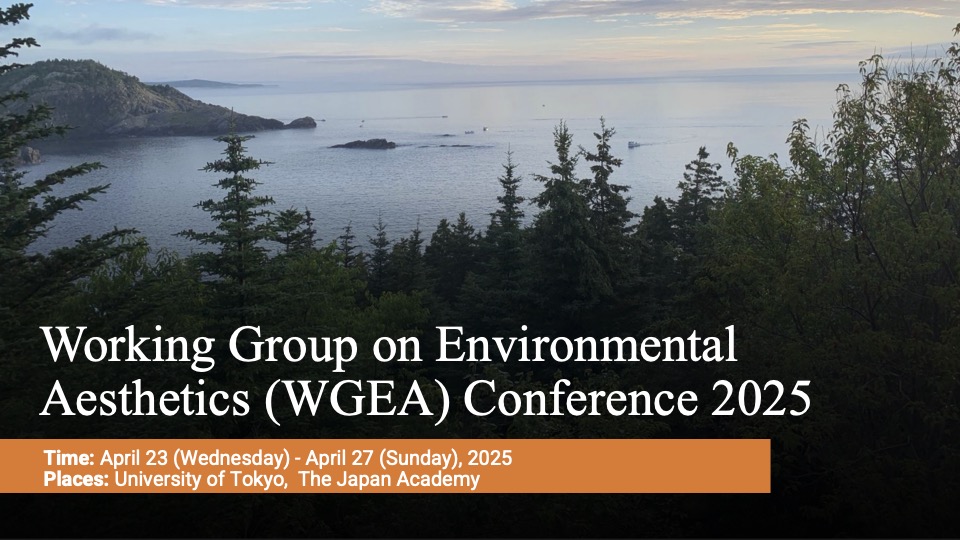
To address today’s environmental crisis, known as the Anthropocene, the Working Group on Environmental Aesthetics (WGEA), a research group formed in 2023 by researchers from North America, Europe, and Japan, has launched an international joint research project entitled The WGEA’s third international conference, “European and Asian Environmental Aesthetics: A Critical Comparison,” will build on the results of research conducted to date, particularly in the Western world, to discuss aesthetics unique to Asia. The objective of the conference was to fundamentally reconsider the significance of aesthetics in understanding environmental crises by focusing on the unique aesthetic role of Asia and the potential of environmental aesthetics, while building on the results of previous research, particularly in the Western world.
The first day (April 23rd) was held at the Graduate School of Humanities and Sociology, University of Tokyo, and opened with greetings from Sean McGrath (MUN) and Uwe Voigt (Uni Augsburg), core members of the WGEA. A forum was held by young researchers on F. W. J. Schelling (1775–1854), a philosopher who could be a link between modern Western views of nature and landscape theory and Eastern aesthetics. The presenters were Arata Nakajima (Bonn University) and Tokuhito Nakamura (Mie University).
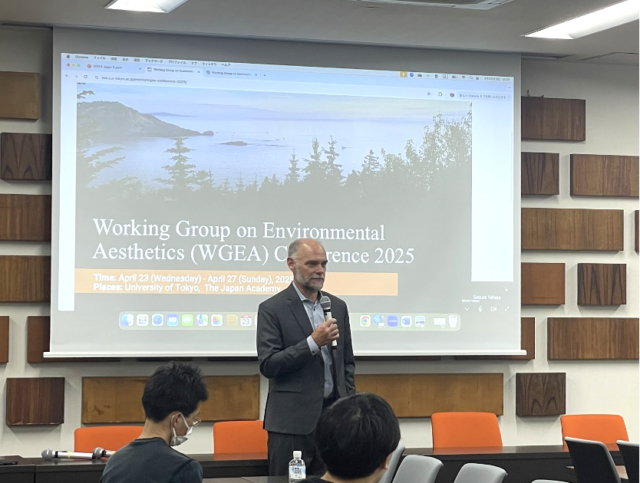
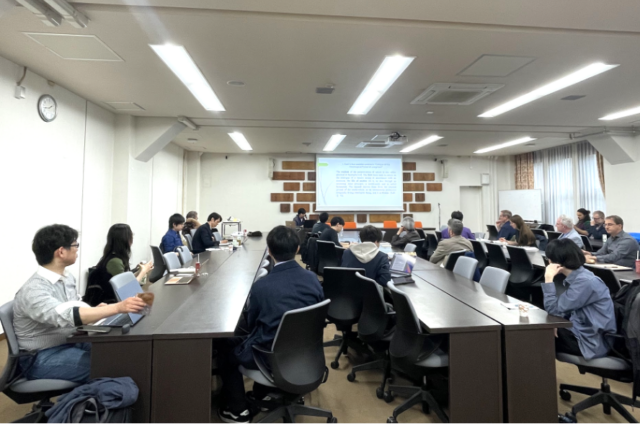
Afterwards, Russell J. Duvernoy (King’s University College) introduced the keyword “aesthetic experience,” while outlining Eastern and Western aesthetics and presenting the important concept of “betweenness” that underpinned the conference. In his keynote speech, Lorenzo Marinucci (Tohoku University) proposed an aesthetic approach that focuses on the sense of smell, which has traditionally been considered a lesser sense.
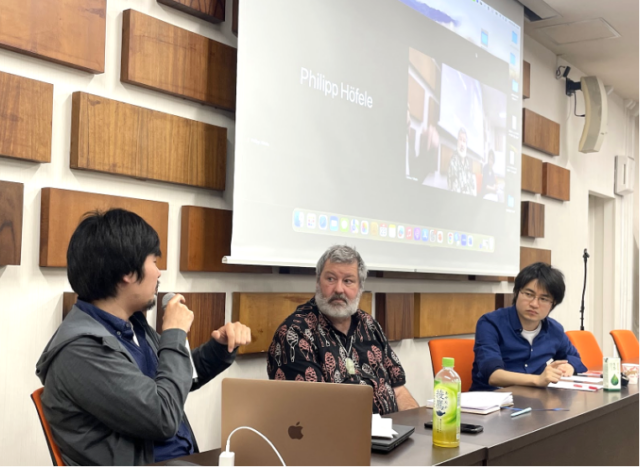
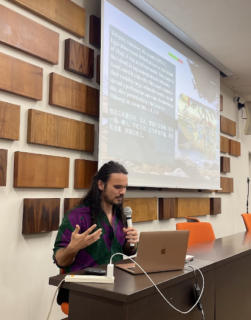
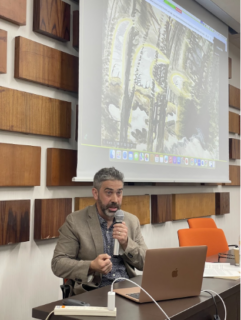
On the 24th (at the Japan Academy), WGEA core member Odabe Tanehisa (Open University) discussed “ki,” a key concept in Eastern aesthetics, from a Japanese perspective, while Uwe Voigt (Uni Augsburg) discussed environmental destruction from the perspective of “sensory paralysis.” Zen researcher Jason Wirth (Seattle Univ.) spoke about the significance of Zen in the Anthropocene, while Ding Yi (Hokkaido University) compared Eastern and Western views of nature, focusing on Goethe and Zong Baihua. Furthermore, Aota Asami (Sophia University), a pioneering young researcher in environmental aesthetics in Japan, gave a keynote speech focusing on “ikebana,” its theoretical development and aesthetic implications.
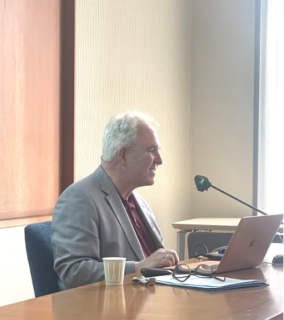
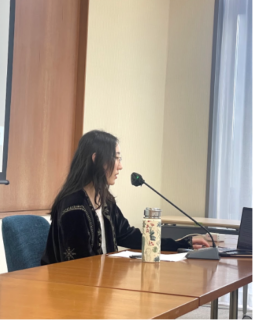
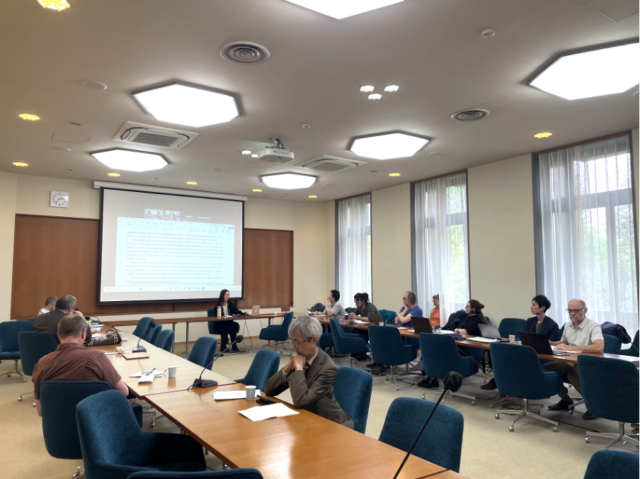
On the 25th (at the Japan Academy), Leila Michelle Vaziri (Uni Konstanz) gave a presentation on the negotiating relationship between aesthetics, ecology, and ethics, focusing on the issue of “care,” using 20th century poetry as a subject. In the two following keynote speeches, Tatsuya Higaki (Senshu University) discussed an ecological view of history with a focus on Wataru Hiromatsu, and Nobutoshi Notomi (University of Tokyo) introduced the “History of World Philosophy” project in Japan and gave a wide-ranging examination of the position of beauty in the diagram of “Truth, Goodness, and Beauty” found in Plato’s thought. Philipp Höfele (University of Freiburg) also participated online from Germany, and under the theme of “Imitation of Nature,” he examined the ethical aspects of the traditional aesthetic framework.
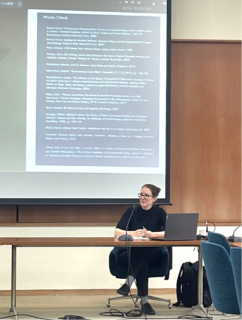
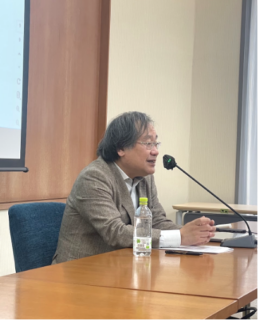
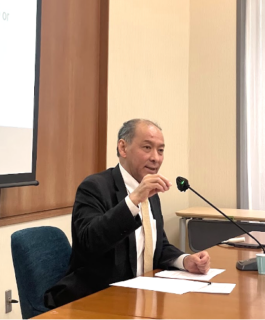
The conference was held at the Institute for Oriental Culture, University of Tokyo on the 26th and 27th. Forum II for Young Researchers was held in the morning of the 26th. First, Anh-Thu Nguyen (Ritsumeikan University) focused on virtual tours in video games, which have seen remarkable technological development in recent years, and analyzed how players experience the world as virtual tourists. Next, Hu Sheng (Nagoya University) examined the landscapes of Chinese battlefields, particularly photographs, among the various media records of battlefields in China, citing specific examples. In the afternoon session, Joachim Rathmann (Uni Würzburg) gave a clear report on the evolution of the concept of awe of nature from the modern era to the present, starting with the question of whether awe of nature and the transcendent has been lost in the digital age. Next, Sakura Yawata (Hitotsubashi University) analyzed examples of artworks from the Echigo-Tsumari Art Triennale, held in the Echigo-Tsumari region of Niigata Prefecture, to examine how people can reconnect with nature through art. After the afternoon break, Takahiro Nakajima (University of Tokyo), Director of the Institute for Advanced Studies on Asia, gave a speech and celebrated the success of the conference.
In the final session, Laura Fumagalli (Uni Augsburg) explored various concepts of negative aesthetics and their role in environmental issues. Finally, artist Stefanie Voigt (HEX Hochschule) introduced her own paintings focusing on the Japanese culture of votive plaques and spoke about the interest in animals in Japanese culture.
On the 27th, Barry Stephenson (MUN) started off by introducing Gary Schneider’s poem on ecology, and gave a report on the relationship between nature and religion. Next, Tomoki Sakata (Uni Bamberg) gave a phenomenological analysis of how nature can be controlled for a better environment, citing concrete examples such as garden hedges, and drawing on the arguments of various philosophers. Georg Gasser (Augsburg) followed up on how the various miracles found in nature have been explained in previous aesthetic theories, and reported that the discovery of these miracles is at the core of the aesthetic experience of nature. At the end of the conference, Sean McGrath (MUN) cited Jun’ichiro Tanizaki’s In Praise of Shadows and pointed out that the praise of shadows and darkness resonates with German Romanticism, suggesting the possibility of further discussion on the common ground between aesthetic discussions in the East and the West.
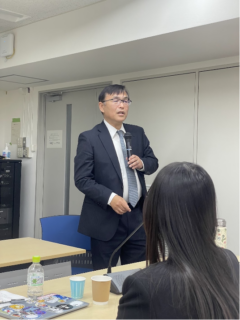
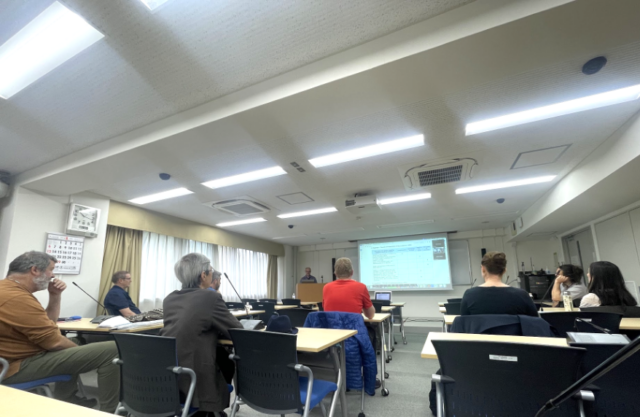
In the morning of the final day, the 28th, members discussed future plans and directions for the WGEA joint research. Chair McGrath summarized various opinions from the members and confirmed that they would continue to hold meetings both online and in person in the future to further advance their research on environmental aesthetics. In the afternoon, an excursion to Mount Takao was held, allowing participants to conduct field research into the Japanese landscape, where nature and culture blend together.
Through the Tokyo conference, we were able to foresee further developments in environmental aesthetics research through research exchanges with various Japanese researchers. There were Q&A sessions throughout the conference, and lively discussions among participants also took place during coffee breaks and other breaks. Throughout the conference, all participants confirmed the importance of continuing research activities with an eye not only on global perspectives such as the global environment and environmental issues, but also on aesthetics rooted in the body, culture, and life. Finally, in order to mutually develop each other’s research, the joint research members vowed to continue their joint research activities on environmental aesthetics in cooperation with various researchers, and the conference closed on a high note.
